
DreamHost is one of the best web hosting providers with 400,000+ customers, managing 1.5 million+ websites, and with an impressive 25 years in the hosting business.
What types of hosting does DreamHost offer?
DreamHost has a wider-than-usual range of products for every level of user. (That's not just an advantage when you're shopping. Having plenty of alternative plans gives you more upgrade paths if your website grows.)
A website builder product is a very easy way to create a simple but good-looking website, while cheap shared web hosting plans are ideal for small or low-traffic sites.
Custom WordPress plans are specially optimized for speed and include useful WordPress-related site management tools and extras.
DreamCompute is a developer-friendly cloud hosting service with full root access and the ability to use DreamHost's object storage service, DreamObjects.
VPS (Virtual Private Server) hosting gives your site more resources, improving speeds, and is often a better choice for heavy-duty or business-critical sites.
Dedicated server hosting plans provide an entire server for your own use, for maximum speed and control.
That's a lot to explore, but keep reading and we'll break down DreamHost's key products, look at where they score, and where they don't, and identify which plans might work best for you.

Shared hosting
Shared hosting is one of the most popular hosting types. It’s a simple scheme where one web server hosts multiple websites—everyone shares both the costs and the server's resources (CPU, RAM, network connection). This makes shared hosting very cheap, but speeds are lower than other types of hosting (although you can still handle thousands of visitors a month on a shared hosting plan).
Right off the bat, I like how DreamHost keeps things simple with just two shared hosting packages.
Shared Starter, priced at a low $2.59 a month over three years (renews at $5.99), offers exceptional value thanks to 50GB fast SSD storage, free SSL, automated WordPress migrations, a free WordPress website builder, free domain with free domain privacy (a valuable privacy protection feature), unlimited bandwidth, and automatic backups.
The only noticeable downside to the Shared Starter plan is that it doesn’t come with any email accounts. Should you want then you can purchase them but then you'll be paying more than what you would with rival hosts that offer the entire package slightly cheaper.
The Shared Starter plan offers unlimited site visits which is there to help you and not be abused. Should your site start to get more visitors you'll be safe for a short time and then DreamHost will ask you to upgrade your hosting plan. To manage this the servers are optimized for stability rather than performance.
We saw this in our testing. We put Hostinger's basic plan up against the Shared Starter and found that Hostinger's plan was more powerful but didn't scale as well and quickly hit higher rate limits. DreamHosts plan was less powerful but did scale to more users slightly better with slower speeds.
If you don't need a CDN and email or the most powerful website hosting then DreamHost is very good value. If you need a package with all the bells and whistles then you should try a different host.
Additionally, it allows you to host just a single site. Hostinger, for example, allows you to host a whopping 100 websites on its cheapest plan—and even InMotion offers a decent 2 website support.
Next is the Shared Unlimited plan, which as the name suggests, supports unlimited web space, sites and email addresses, and is priced at $3.95 per month for the first three years, $10.99 on renewal.
- Want to try DreamHost? Check out the website here

Cloud hosting
DreamHost really does stand out as a cloud hosting provider. It’s rightfully placed in my list of the best cloud hosting services because it’s one of the very few to offer true cloud benefits. These include geo-redundancy and auto-scaling, where you can automatically change your server resources through OpenStack-compatible API requests.
Auto-scaling helps you manage infrequent spikes in your website traffic by temporarily increasing More DreamHost featuresyour resources—and allowing you to only pay for resources you actually use.
DreamHost offers its cloud service under a product it calls DreamCompute. It’s among the cheapest cloud hosting services on the market right now (almost twice as cheap as OVHcloud). You can get started at just $0.0075 per hour and enjoy access to 512MB RAM, 1 vCPU, free bandwidth, and 80 GB SSD storage. Even better, it comes with a maximum monthly price, which is $4.50 for the above-mentioned plan.
As is the story with DreamHost, even its cloud hosting plans are more geared towards individuals and small businesses. This is because it caps out at 8 vCPU and 16GB RAM, so if you’re a large business with need for tons of resources, you’ll be better off with, say, ScalaHosting that comes with custom cloud hosting plans and can go as high as 24 CPU cores, 64 GB RAM, and 2,000 GB storage.

WordPress hosting
WordPress is a hugely popular website creator because not only is it easy to use for hosting newbies but also powerful enough to handle even the largest of business-critical sites.
DreamHost offers two tiers of plans for WordPress. The first one, WordPress Basic, is essentially its shared hosting plans, with the same features and the same price (from $2.59 a month). They're cheap, and if you're just looking to learn the WordPress basics, they should be more than enough.
These plans come with a handful of custom WordPress features, including a WordPress installer, free automated WordPress migrations, a simple website builder to create an elegant WordPress website, and automated WordPress updates.
However, if you're aiming to build a serious WordPress site, I'd recommend DreamPress, which is DreamHost's professionally managed WordPress hosting range, capable of handling anything up to one million visitors a month. The resources here are not shared, so other users cannot affect your website’s performance—and you get a high-performance cloud server environment, which is a huge plus on the reliability and performance fronts.
The starter DreamPress plan has 30GB SSD storage, unlimited email, free SSL, and on-demand and daily backups. In addition to the custom WordPress features in the shared hosting plans, you get specialist WordPress support and 1-click staging for easier website testing. DreamHost says the plan is built for 100k monthly visitors, and it looks good value at $16.95 billed monthly on a yearly subscription.
The second tier, DreamPress Plus, is an interesting one. It costs 50% more ($24.95 a month) than the above-mentioned plan for which it doubles your storage and increases the number of phone support callbacks to 3. That’s it. It’s worth noting that earlier this plan added the powerful Jetpack Professional toolkit (backups, malware scanning, CDN, and more), which is now offered on all the three plans. While this is undoubtedly a good thing, it does bring down DreamPress Plus’s appeal quite a fair bit.
Spending $71.95/month on the top-of-the-range DreamPress Pro gets your more resources, priority support (expedited help, advanced troubleshooting, and proactive monitoring), and lifts the suggested visits per month figure to one million. However, that's an advisory figure only, DreamHost won't cut you off if you have more.
A highlight of DreamHost is that it’s recommended by WordPress.org, the makers of WordPress. This is because DreamHost has been actively involved in the WordPress community and has contributed to WordPress’s development over the last 10 years.
Overall, DreamHost is one of the best WordPress hosting providers, offering very capable managed WordPress plans which are well worth considering if you're managing a high-traffic site. However, experienced or more technical users should check out Hostinger and InMotion Hosting's WordPress ranges, too.

VPS hosting
VPS (Virtual Private Servers) improves on shared hosting by providing resources that only your site can use. That's great news on the performance front, because the less time a web server has to spend dividing up its RAM and CPU time, the more time it has to just serve your site, and the faster it'll be.
DreamHost has four very simple VPS plans.
All plans support unlimited websites, traffic, and email addresses. There's also free SSL for as many sites as you need.
A very important highlight of DreamHost’s VPS plans is that they're all managed, which means DreamHost handles complex low-level tasks like updating the operating system for you. However, the service isn’t a fully managed one as anything to do with managing your site comes under a different DreamHost service, which will cost extra.
Coming back to DreamHost, it offers a capable range for VPS newbies, with all the core features you need, and for a very fair price. If you have a simple goal—you're building a business-critical WordPress site and need better speeds (which are also more reliable) than shared hosting, DreamHost's VPS range could be a smart choice.
However, more experienced users may not be as happy. For instance, the plans don’t mention the amount of CPU resources they offer. This is because the CPU scheduler is based on time instead of the percentage of utilization. Next, there just aren't many features or configuration options here, no root access, nor do you get a choice of operating system.
DreamHost doesn’t have unmanaged VPS hosting, either. So, if you’re adept enough at handling server issues, and are willing to compromise support for a lower price, you can consider Hostinger’s unmanaged VPS plans.
Also, strangely enough, while the plans say that they’re VPS, you don’t actually get a VPS server. You get a Linux container with kernel-level isolation, which, in all fairness, is still more reliable than shared hosting plans, but you don't get the sort of security benefits you would with a typical VPS server. This is because OS vulnerabilities in a Linux container can cause isolation breakouts.
If you think you might need more than DreamHost's bare-bones plans, check out my guide to the best VPS hosting providers.
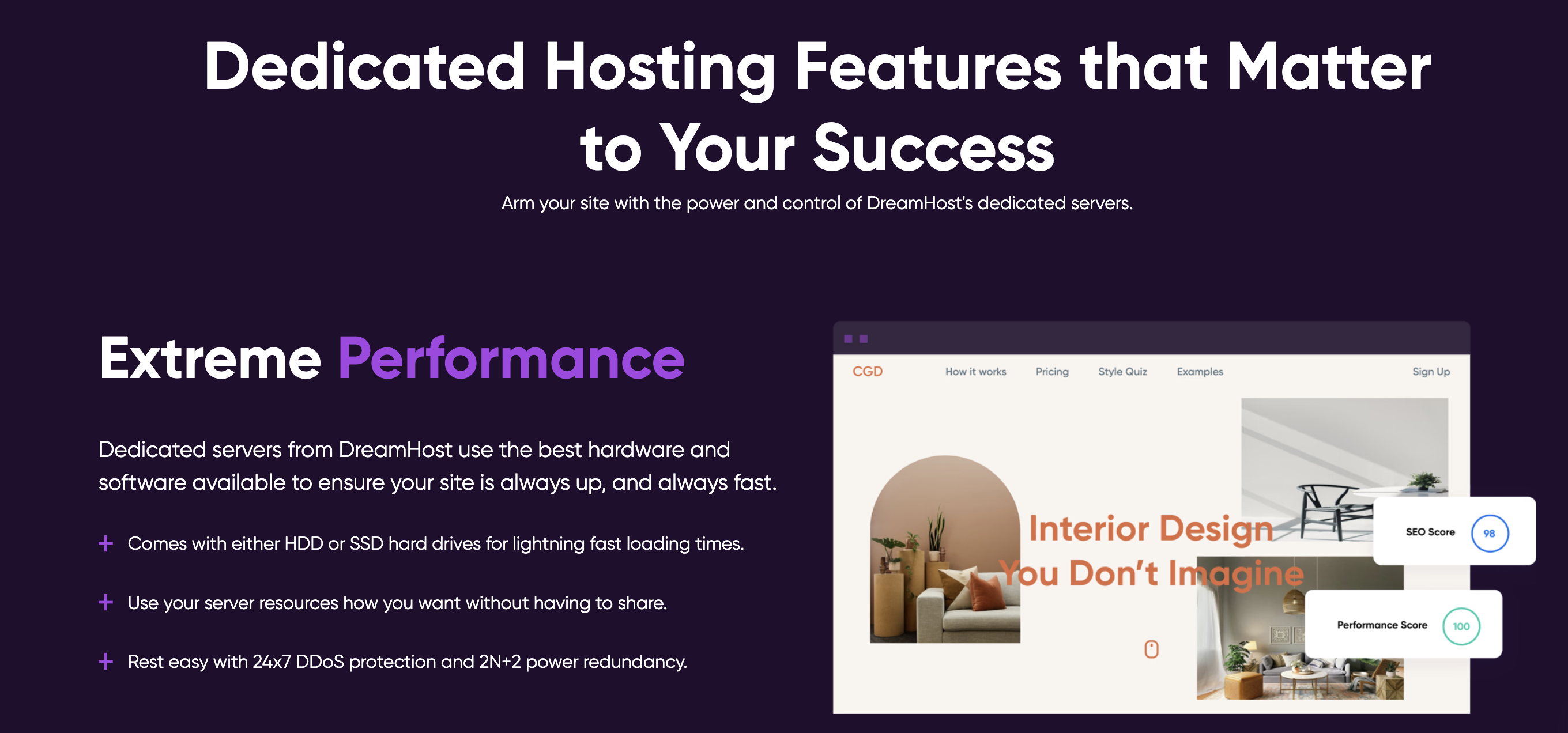
Dedicated hosting
Buy a dedicated hosting plan and you get a server just for you. This way, you can wave goodbye to sharing resources and unexpected slowdowns because someone else on your server is having a bad day. Dedicated hosting means great performance all the time.
DreamHost has significantly tweaked its dedicated hosting offerings of late, and the change is for the better. Where earlier it offered HDD storage for most of its plans and SSD only if you picked the 12-core CPU, it now offers SSD on all plans, and has completely done away with HDD storage.
However, this also means that the starting price which was earlier $149/month has been increased to $165/month (on a yearly subscription). This gets you a 6-core/12-thread CPU, 16GB RAM, and 480GB SSD.
You also have the option to opt for a more powerful 12-core/24-thread CPU where you can go as high as 128GB RAM and 1920GB SSD—meaning DreamHost’s dedicated hosting is large-business-friendly, which isn’t the case with its shared or cloud hosting services.
When compared to the best dedicated hosting services right now, DreamHost has one up on most providers thanks to 100% network uptime guarantee. With emergency generators, data centers around the world, redundant cooling, and constant monitoring, DreamHost is a must-have for you if you just can’t afford to have your site down.
However, services like InMotion and IONOS (this one has a pay-as-you-go pricing model) are certainly more value for money, and a better pick for the majority of users. InMotion, for instance, starts at $69.99 per month and gives you 16GB RAM, 1TB SSD, a decent 4-core/8-thread processor, and a full-fledged security suite, as well as a choice of control panel.
The cost difference is even more substantial for large businesses who need tons of resources (think 128GB and more). DreamHost doesn’t allow you to pair an SSD with a secondary high-storage HDD, which is something you get with Liquid Web.
More DreamHost features
In addition to the above, I’d like to point out a few DreamHost offerings that caught my eye. The first one is dedicated email hosting, starting at $1.99 a month - or $1.67 a month if you go for a yearly commitment.
This will be a top-up to your existing hosting plan and get you professional emails @yourdomainname.com, 25GB storage per mailbox (Gmail’s free offering gives you 15GB), real-time syncing across mobile and desktop, and an ad-free experience.
Next, there’s integration with Google Workspace, which can be a value addition for teams. Here, you’ll get Google Meet voice and video conferencing, team chat, shared calendars, business email through Gmail, access to other Google products, 24/7 assistance from Google Workspace experts, and more.
It’s worth noting that the extent of features you unlock will depend on your chosen Google Workspace plan. There are two plans: one at $7.20 per user per month and the other more feature-packed one at $14.40 per user per month.
DreamHost Pro services
DreamHost offers a slew of professional services, including custom website designing, SEO marketing, social media marketing, dedicated web software and backend management, and web development.
Just note that these services cost a pretty penny. For instance, you’ll have to shell out $1,499 if you want DreamHost experts to create a polished, professional website tailored to your needs. Other services range anywhere between $59/month for website management to $399/month for social media marketing.
With that said, they offer excellent bang for buck for those who’d like to get things done by a professional and skyrocket their business’s growth without wasting time with a hands-on and trial-and-error approach.
Does DreamHost have a website builder?
If you don't have a website, and creating something with WordPress feels too much like hard work, a website builder could be the perfect solution. Most builders either come with a choice of prebuilt sites, or can create one for you from scratch. You can add elements like text, images, videos, maps or forms by dragging and dropping, then customize the content much as you would in Word or any editor.
DreamHost's website builder, which is included in all of its plans no matter the hosting type, is based on WordPress, but don't let that put you off: it's still an easier way to create a simple site. It comes with 200+ sample websites for various categories (photography, food, music, fitness, fashion and more). Next, you get a handy drag-and-drop mechanism using which you can choose from a selection of over 100 blocks, add some content of your own, and you could have a small site ready to go within a couple of hours.
The website builder is easy to use, block-based, and might just about be enough to create a small family site, or a low-traffic blog. It even comes with real-time SEO recommendations so that you can create content that’s optimized for search engines. There are enough customization options, too, and you can tinker around with pretty much everything, whether that’s the font size or text color.
However, the templates are basic and there aren’t any image-editing tools, either. If you want an out-and-out website builder with more than just the basics, I’d recommend choosing from one of the best website builders instead. Hostinger, for example, gives you the option to have a website created entirely by AI.
Like DreamHost, Bluehost, too, has a WordPress website builder. It includes website templates to help you get started, and has a simple drag-and-drop page editor. But even its most basic $2.99/month plan includes contact forms, social media sharing, and other useful business tools—and the top-of-the-range product even allows you to build a web store.
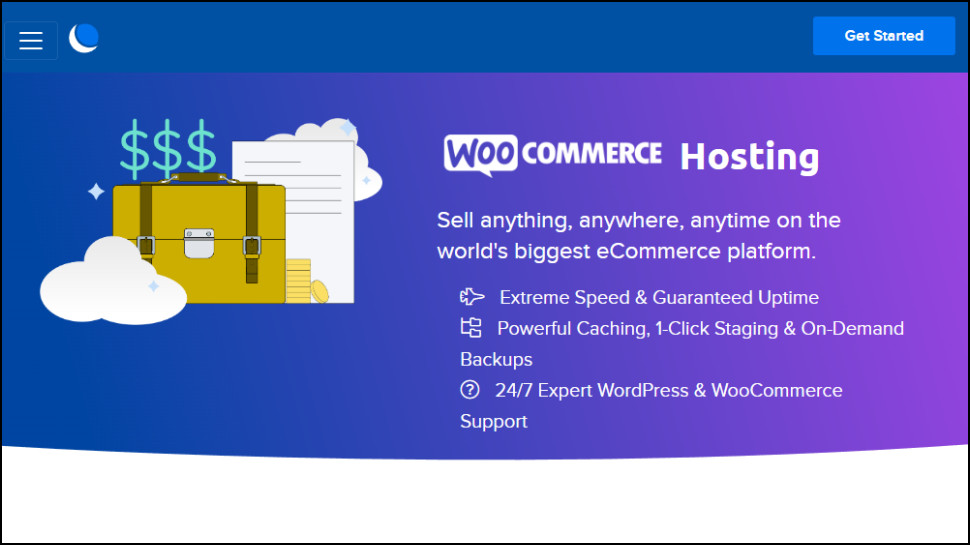
Can I build a web store with DreamHost?
DreamHost doesn't have the range of ecommerce plans we see with some providers, but it does have one capable option: a VPS-based WooCommerce range with the power to build some very powerful web stores. WooCommerce is widely considered as one of the best ecommerce platforms for WordPress.
However, it’s worth noting that although DreamHost describes this as 'WooCommerce hosting,’ it's the company's regular WordPress hosting (DreamPress) underneath, with the same prices and specs. If you skipped the WordPress section, I like DreamPress a lot—it has plenty of features and the power to handle 100k to a million visitors a month, enough to cope with some very busy web stores.
Opting for the WooCommerce plans does get you a few tiny extras. WooCommerce is preinstalled with a few themes and plugins, for instance, and DreamHost updates both WooCommerce and WordPress. Good news, but that doesn't really help you build, manage, and troubleshoot your new web store.
If you like DreamHost's WordPress hosting and you're happy to work on the WooCommerce and web store building tasks yourself, then these powerful plans are well worth considering.
However, if you're looking for something simpler, many website builder plans include the ability to add a web store. HostGator supports a tiny three-product store with even its most basic plan, and Bluehost and GoDaddy both have capable ecommerce plans.
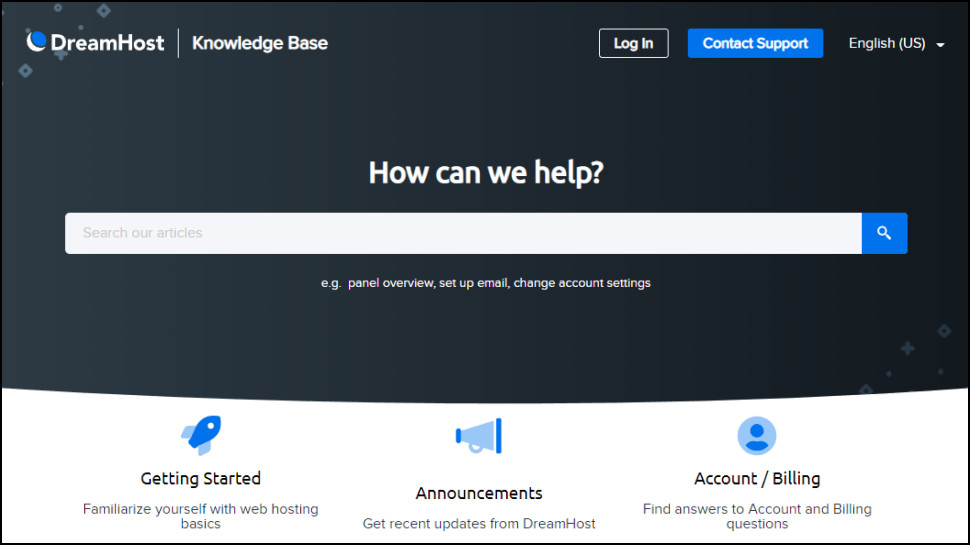
DreamHost Customer Support
DreamHost’s customer support has come a long way since our last review. Now, it offers free 24/7 technical support via email and live chat across all time zones from three continents: North America, South America, and Europe. Supported languages include English and Spanish.
While DreamHost does not have a call-in phone number for technical support, you do get the option to request for callbacks. However, that’s only available with higher-end DreamHost hosting packages.
To test its claims, I throwed some genuine questions at the support agents. I’m happy to report that individual support agents performed well in my tests. Plus, live chat queries had responses within minutes, tickets in under an hour or two (as claimed by the company, so that’s good too), and replies were helpful and detailed.
Furthermore, it also has an in-depth knowledge hub with tons of helpful articles and step-by-step tutorials, which you can use for general know-how and help on the fly.
A standout DreamHost offering is its exceptional 97-day money-back guarantee (for shared hosting products). This also suggests that the company has real confidence in its service, long-term. If you decide to sign up, that's plenty of time to find out how DreamHost works for you.
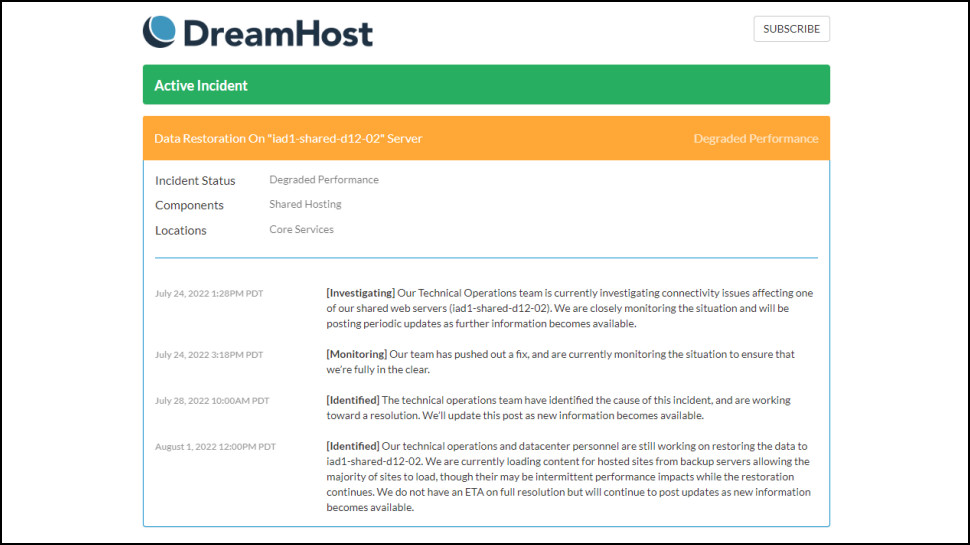
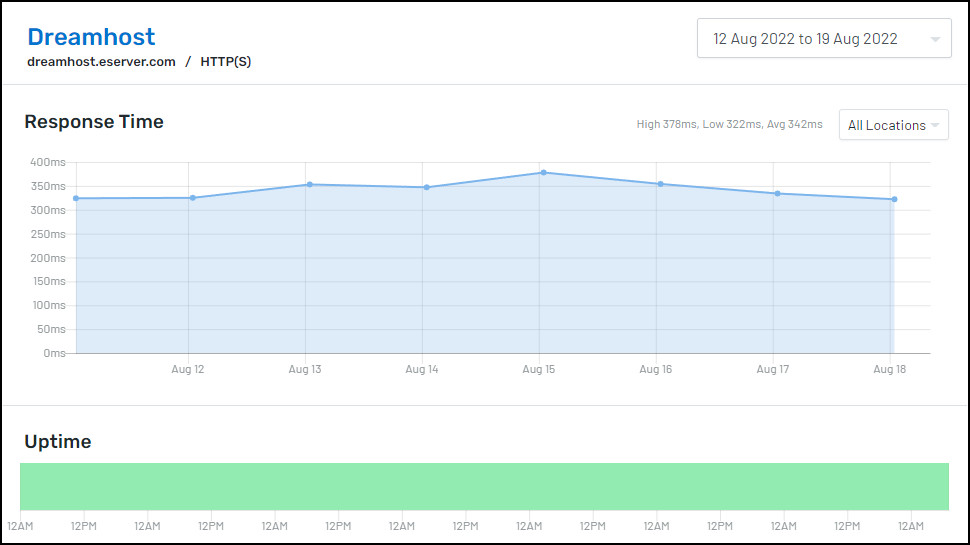
How fast is DreamHost?
Uptime, the proportion of time your website is accessible to the outside world, is a key measure of any web host. A provider can have the fastest and most powerful servers around, but none of that will matter at all if your site is regularly down.
We tested DreamHost's uptime over a week, and those results were good, with our site showing 100% uptime, and an average response time of 0.342 seconds (that's the fourth fastest score in our last 15 tests).
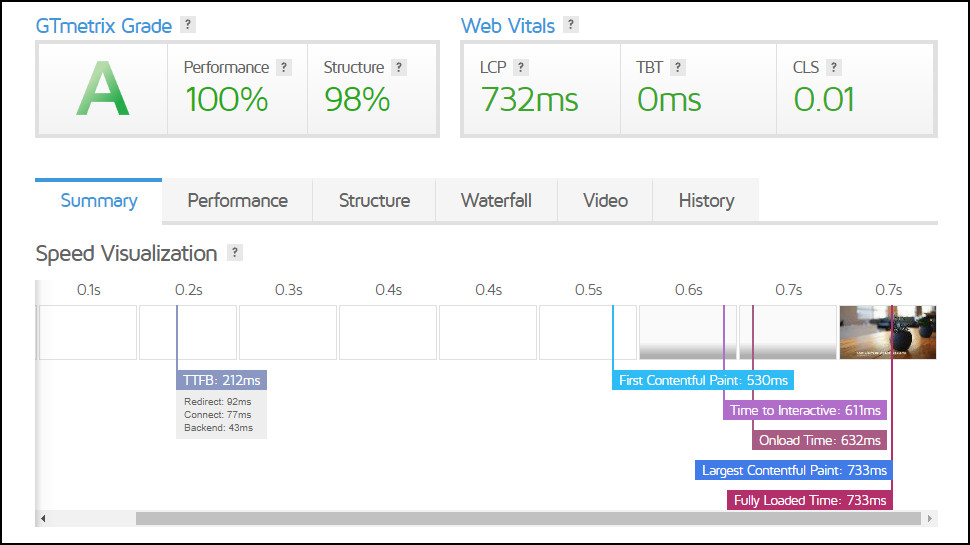
Next, we asked GTmetrix to access a page from our test site and calculate how long it takes to display its main content (a figure known as Largest Contentful Paint, or LCP). Most decent hosts manage somewhere between 0.55 and 0.90 seconds, and DreamHost scored a perfectly acceptable 0.732 seconds.
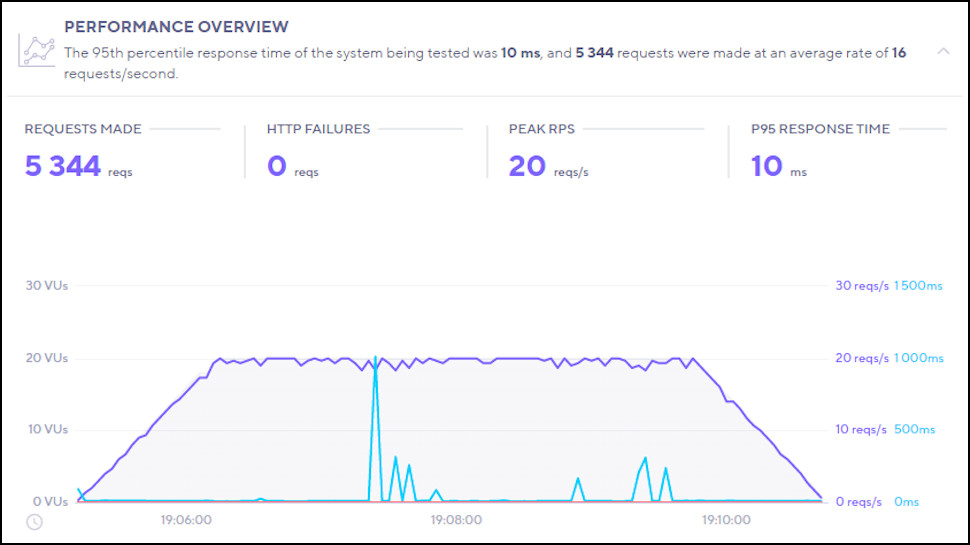
Fast load speeds are good news with a single user, but what happens when a site is busy? We use k6 to unleash 20 virtual users on a site at once, and see how the server copes. DreamHost handled an average 16 requests per second, fractionally outperforming most of the competition (the average score is 10-15 requests).
To conclude, DreamHost is an extremely reliable hosting service that delivers on its promises to load both light and heavy web pages without missing a beat. Its 100% uptime guarantee, especially at its price point, is nothing short of outstanding—top dogs such as Hostinger and Bluehost offer 99.96% and 99.95%, respectively, and HostGator doesn’t guarantee uptime at all.
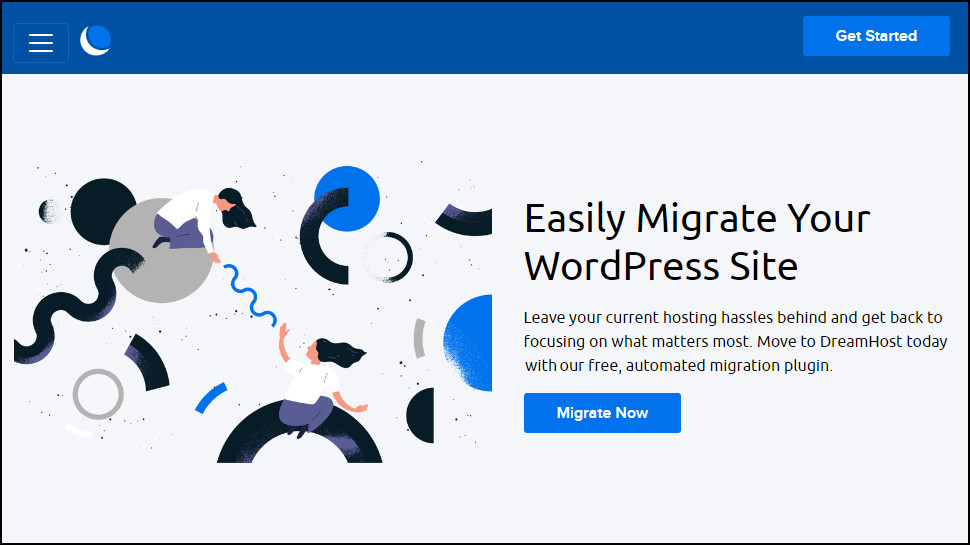
How easy is DreamHost to use?
Although DreamHost doesn’t offer the industry-standard cPanel—and offers a custom-built control panel instead—it’s fairly easy to use and get started with.
The control panel looks good, with colorful icons, and everything from your domains and websites to one-click installs and support options, as well as your account and billing info and hosting configurations, is available on the left-hand sidebar. This is when around half of that sidebar is just an ‘Add Product’ section displaying the different DreamHost plans you could subscribe to. Cheeky, yes, but it doesn’t pose any real navigation issues.
Installing WordPress is child’s play. You also get an option to pre-authorize the WordPress installation, meaning DreamHost will send you an email once WordPress is set up. I suggest opting for the pre-install option since DreamHost takes a while to install WordPress—around 20-30 minutes. This is in sharp contrast to other providers who either do it instantly or take no longer than just a few minutes.
What’s more, even creating a new email address is ridiculously simple. Just click the ‘Create New Email Address’ button, fill out your details, and that’s it. All in all, DreamHost is one of the easiest to use web hosts I’ve ever tried my hands on, meaning it’s great for beginners and the non-tech-savvy folks who’d very much like a plug-and-play solution.
Final verdict
DreamHost's lengthy down time got our review off to a bad start, but there's still a lot to like here: lots of products, WordPress solutions for personal to major business sites, fair prices, and a reassuring 97-day money-back guarantee for shared hosting customers. Worth considering.
What types of payment does DreamHost support?
DreamHost accepts payment via card and PayPal.
Does DreamHost offer refunds?
DreamHost offers a spectacular 97-day refund period for shared hosting products. The industry average is 30 days, and only InMotion Hosting gets close with its 90-day policy.
There's one potential complication. DreamHost accepts payment via credit card and PayPal, but the Terms and Services page says only those paying via card are eligible for the 97-day deal. A Refunds page in the Knowledgebase doesn't say that, and just says you should contact Support for help, but we'd recommend keeping that in mind. If you sign up and have a choice, paying via card could make for an easier life later.
There are different rules for other products. For example, dedicated hosting users can also get a full refund if they cancel within 30 days. And if VPS users cancel within 30 days of purchase, they're charged for the first month, but are refunded the rest of their fees.
Does DreamHost have an uptime guarantee?
DreamHost has a 100% uptime guarantee, hugely impressive in an industry where most hosts stop at 99.9% (which translates to an 'acceptable' downtime of 43.83 minutes a month.)
Even better, this isn't just about your website. If any part of its service is down - website, databases, email, FTP, SSH or webmail - is unusable due to 'failures in DreamHost systems' outside of scheduled maintenance, you'll qualify for compensation.
DreamHost says it will credit your account with one day of hosting for every hour (or partial hour) of downtime, up to a maximum of 10% of your next renewal fee.
It's an interesting idea, and an improvement on what we see with many providers. But there's a notable catch in the small print. DreamHost counts downtime as starting when you raise a ticket, so if your site goes down for a few hours when you're asleep, on holiday, or any other time you're not paying full attention to your hosting, you won't get any compensation at all.
Where are DreamHost's data centers?
DreamHost has two USA data centers in Ashburn, Virginia, and Hillsboro, Oregon.
Most top providers have data centers spread more widely around the world. For instance, GoDaddy can host your website in North America, India, Singapore or Europe.
If your website isn't primarily for the USA, you're able to choose a data center closer to your audience location, immediately improving performance.
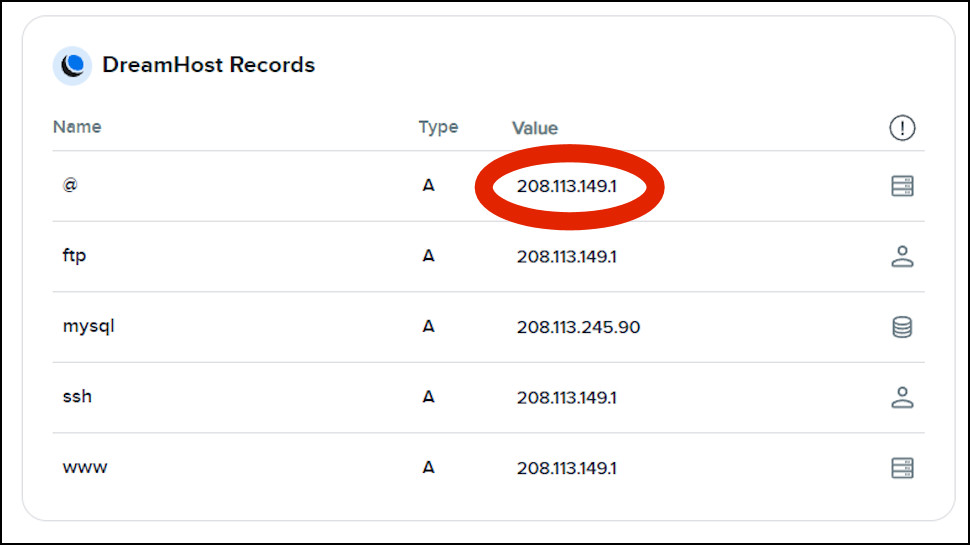
What is my DreamHost IP address?
Finding the IP address of your DreamHost web server can help you solve some initial website setup problems, such as how to point a domain registered with another provider to your DreamHost web space.
To locate the IP address for your server, first log into DreamHost's control panel (panel.dreamhost.com).
Click Domains in the left-hand sidebar, then Manage Domains.
Find the domain or subdomain in the list which you're hosting, and click its DNS link.
Scroll down to the DreamHost Records section. Your server IP address is displayed as the Value for most record types (www, @, more).
What are DreamHost's nameservers?
DreamHost's nameservers are ns1.dreamhost.com, ns2.dreamhost.com and ns3.dreamhost.com.
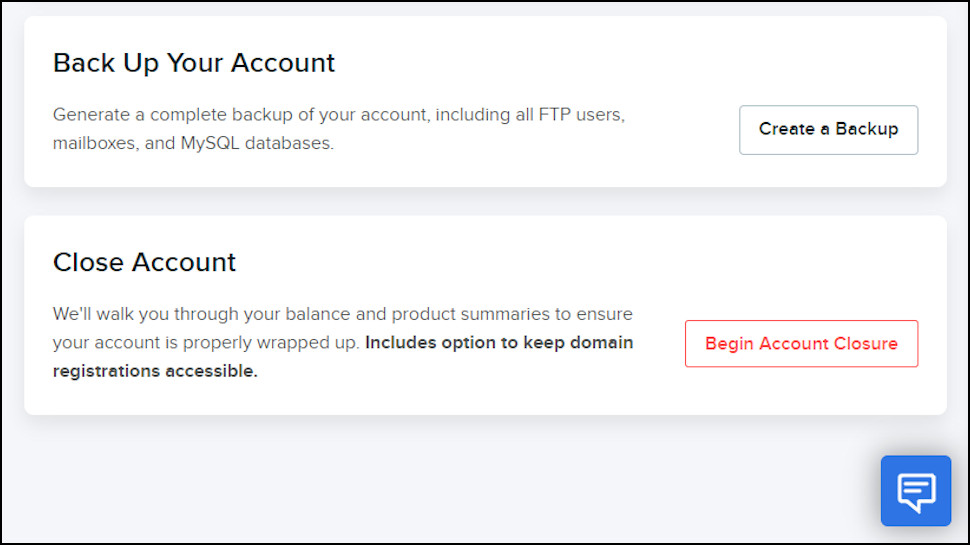
How do I cancel a DreamHost product?
Log into DreamHost's control panel (panel.dreamhost.com)
Click your account name at the top right of the screen, and choose Account Information.
Scroll down to the Active Plans list.
Find the plan you'd like to cancel, and click its Manage button.
Scroll down to the bottom of the screen and click the Begin Account Closure button.
Follow the instructions to complete the cancel process. Be sure to read any warnings carefully, because there's a lot of information here, covering everything from exactly when your files and email access will disappear to whether you qualify for a refund, and how to claim it.







